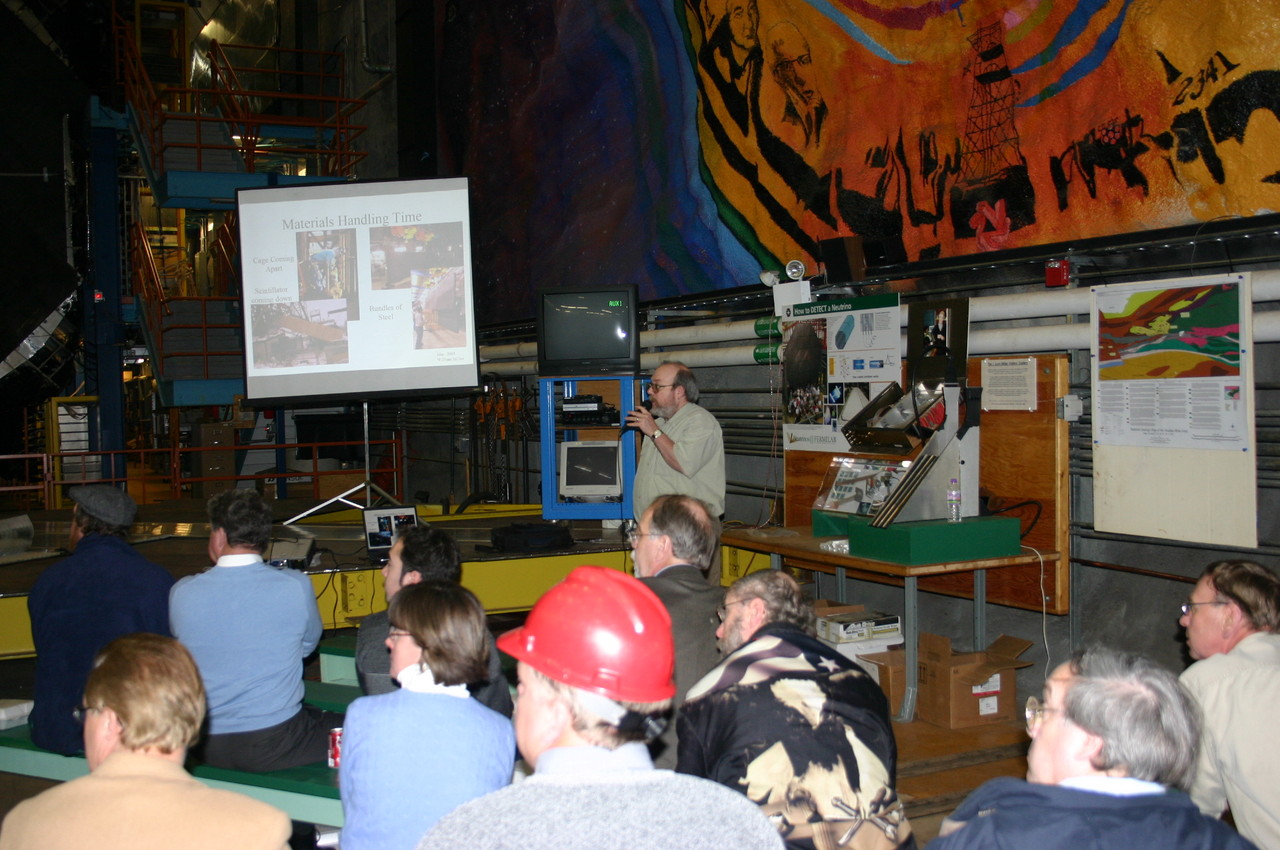Support the Timberjay by making a donation.
DUSEL’s uncertain future may benefit Soudan lab
Tight budgets in Washington and skyrocketing costs for Homestake project have researchers looking for alternatives
Plans for the construction of a national laboratory deep in the bowels of South Dakota’s Homestake Mine have run headlong into the new fiscal reality in Washington— and that could breathe new …
This item is available in full to subscribers.
Attention subscribers
To continue reading, you will need to either log in to your subscriber account, or purchase a new subscription.
If you are a current print subscriber, you can set up a free website account and connect your subscription to it by clicking here.
If you are a digital subscriber with an active, online-only subscription then you already have an account here. Just reset your password if you've not yet logged in to your account on this new site.
Otherwise, click here to view your options for subscribing.
Please log in to continue |
DUSEL’s uncertain future may benefit Soudan lab
Tight budgets in Washington and skyrocketing costs for Homestake project have researchers looking for alternatives
Plans for the construction of a national laboratory deep in the bowels of South Dakota’s Homestake Mine have run headlong into the new fiscal reality in Washington— and that could breathe new life into efforts to retain the University of Minnesota’s underground lab at Soudan.
While the plans for a Deep Underground Science and Education Laboratory or DUSEL have yet to be shelved completely, the idea suffered a major blow in December when the National Science Board rejected a $19 million request to fund continuing development of the lab.
The board cited the $480 million overall cost just to develop infrastructure for the lab, and questioned whether the facility is consistent with the National Science Foundation’s core mission. The lab is set to initially house a particle detector operated by the Department of Energy.
The decision was a blow to DUSEL, but not yet a fatal one. The NSF did agree to continue to fund basic operations at Homestake at least until September and the Obama administration is proposing $15 million in funding in its 2012 budget to allow the DOE to assume responsibility for maintenance of the mine.
But the proposed funding involves little more than basic maintenance of the mine, which reportedly costs approximately $1 million a month to operate.
That means the long-delayed DUSEL project is facing, at a minimum, another potentially significant delay.
But some observers wonder whether DOE will ultimately pursue the laboratory project on its own. University of Minnesota physicist Marvin Marshak noted that the DOE’s Office of Science, which would oversee a takeover of the project, is facing potentially significant budget cuts, which would likely discourage the office from assuming a large new financial obligation.
Determining just how large that financial obligation could be will be the task of a panel of experts recently appointed by the DOE. Among them is Bill Miller, the longtime manager of the Soudan lab. Miller noted that the cost estimates for the DUSEL project have been rising steadily, from an original estimate of about $1 billion, to at least $2 billion today. But Miller said the cost estimates have been somewhat vague in the past and the committee will work to fine-tune the projections and make recommendations to the DOE by late May.
The uncertainty over the future of research at Homestake leaves supporters of high-energy physics research, like Marshak, looking more seriously at alternatives. “My perspective is I’d like to keep up the momentum with the research,” said Marshak. “We’ve hit a bump in the road as a community. Ideally, you would get everything, but right now, that’s not how it will be. So the question is how can we sustain the research? To the extent that Soudan may be a solution to that I certainly want to encourage it.”
At this point, said Miller, the future of the Soudan lab looks much brighter than it did a year ago. “It’s pretty exciting,” he said.
According to Miller, the lab just landed a new dark matter experiment, and a group of geologists that had originally planned to conduct research in the new DUSEL recently visited Soudan and are now seriously considering bringing their research to the facility. They would be joining a group of geologists and microbiologists from the University of Minnesota that are conducting research on the ancient brines that they’ve discovered in the Soudan Mine’s two billion year-old greenstone. That team of scientists is looking at establishing a small underground lab of its own, and possibly a clean room, which would allow much of their research to take place entirely underground.
“It’s really looking positive for the future of Soudan,” said Miller.






